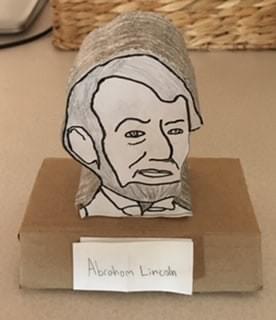If you'll remember, the Quarter 2 Independent Reading Assignment I offered focused on reading a non-fiction book. My students loved finding a book about something that interested them, learning about the time period and presenting their projects to class.
These are some examples of student work, reflecting different grade and reading levels. Not all non-fiction books your students choose have to be tomes, and you have an enormous amount of leeway to allow struggling readers to choose quality picture books. My original Q2 Independent Reading post includes a list, a bit dated, of many good non-fiction books for 7/8th grades.
Assignment: Create a diorama that succinctly captures the main topic or subject of your book. This can be a scene, if your book is about a specific event in history, or a bust (a sculpted head and neck of a person), if your book is about a historical figure.
Example: 6th grade, after reading these two books about the Boston Tea Party. You Wouldn't Want to series and What was? Who HQ Series

Example: 7th grade, after reading Lincoln's Grave Robbers, by Steve Sheinkin

This dictionary assignment, in particular, allowed my students to pull out terms they thought they had figured out from the context of their books, but often failed to truly understand. It was all the rage in 8th grade -- English and Social Studies teachers adapted this one!
Assignment: Create a dictionary of terms specific to the time period in which your IR book is set. You must have one term, or word, for each letter of the alphabet (yes, even Z!). Use a printed dictionary -- I have many on my shelves -- as a guide to formatting your dictionary. You must include at least one illustration per word. You may include a maximum of 15 photographs.
Example: 8th grade, after reading M.T. Anderson's Symphony for the City of the Dead.




